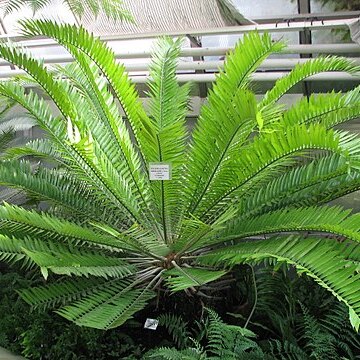Leaves up to 3 m. long, white woolly when young; median leaflets up to 35 x 4–5 cm., lanceolate, falcate, but with the tips curved forwards above, margin with 2–6 spiniferous teeth on each side which are more closely set towards the base; leaflets reducing in size towards the base, and becoming elliptic, being ultimately replaced by short spines which continue to the petiole-base.
Male cones up to 50 x 9 cm., cylindric-fusiform; peduncle 5–25 cm. long; median cone-scales distinctly ascending with the heads sharply deflexed so that the terminal facet is retained in a plane parallel to the cone-axis; heads triangular-rhomboid with a rounded adaxial margin, terminal facet rhombic and concave.
Female cones up to 60 x 25 cm., cylindric, dull yellow; peduncle 4–6 cm. long; median cone-scales truncate-deltoid in outline with the rhomboid heads deflexed; terminal facet hexagonal and concave.
Seeds 3 cm. long, oblong-ovoid, vermilion.
Trunk up to 6 m. tall.

